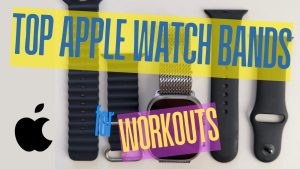When you look at the setups of elite calisthenics athletes, gymnasts, and even high-level functional fitness coaches, one thing keeps showing up: wooden workout rings. It's usually not the TRX straps. You’ll also see rings hanging in home gyms, outdoor parks, and even tucked into backpacks on the road.
Meanwhile, TRX suspension trainers tend to dominate hotel gyms and corporate fitness classes. Both tools look similar from the outside — two straps, two handles — but once you’ve spent time training seriously, the difference becomes night and day.

The reason is simple: rings are built for real strength workouts, not convenience.
They move with your body instead of forcing your joints into preset positions; they unlock a far greater range of exercises, and they cost a fraction of what a TRX setup does. That’s why advanced athletes naturally gravitate toward rings — they feel better, perform better, and age better with your training. For pros, the choice isn’t about brand names or marketing; it’s about physics, control, and long-term progress.
In this article, I’ll break down why even though both tools fall under “suspension training,” rings belong in a completely different league. We’ll look at ergonomics, versatility, sustainability, and cost from both a practical and first-principles perspective — plus what countless experienced users (myself included) have noticed after years of testing both. By the end, you’ll understand why professionals never ask “TRX or rings?” — they just pick up the rings and get to work.
Why I’m Choosing Rings Over TRX
If you know me, you know I like the gear that gives maximised value for minimal fuss. A pair of rings fits that bill. They’re simple, ridiculously effective, and—crucially—give you more than you might expect.
TRX has its place, guaranteed. But for my training (and what I know many of you do) rings deliver better long-term value. Here’s how.
TL;DR (but don’t): Rings win on ergonomics, exercise variety, sustainability, and cost. TRX wins on cushy foot cradles and group-class familiarity.
- Ergonomics: Rings rotate and align to your joints. Your wrists, elbows, and shoulders can “find” their natural path, which tends to feel better and age better. TRX has fixed handles; rotation is limited by the handle attachment and strap geometry. Community consensus backs this up.
- Exercise universe: Rings unlock support holds, dips, muscle-ups, levers, straight-arm strength, and true false-grip work—all difficult or impossible on TRX. TRX libraries excel at rows, presses, hinges, core rollouts, and single-leg patterns, but not classic ring skills. Compare the typical TRX exercise lists with ring exercise lists and you’ll see two different ceilings.
- Sustainability: Wooden rings (the handles) are made from a renewable, biodegradable material; certified wood can be an environmentally responsible choice. TRX handles are plastic/rubber/foam over nylon webbing. Straps for both are nylon, but choosing wood over plastic for the contact surface still matters.
- Price: Rings are usually under $50 from mainstream brands and retailers; “premium” pairs still come in well below TRX systems, which commonly retail ~$150–$300.
Now, let’s unpack all of that properly.
Why Two Free-Rotating Circles Beat Fixed Handles
Rings give your body more useful degrees of freedom, therefore you can self-organize into joint-friendly positions as the load changes.
- Self-selected wrist rotation. On rings, your forearms can pronate/supinate freely throughout the rep. In a ring row or pull-up, you can start neutral, end supinated, and subtly change the arc to match your structure. Fixed handles constrain that path. Over thousands of reps, that freedom matters for elbows and shoulders. Experienced ring users point to this as a key “it just feels better” reason.
- Shoulder external rotation & scapular freedom. Rings encourage external rotation at the bottom of dips and allow you to protract/retract naturally through rows and push-ups. The straps don’t torque you into one track like a rigid machine.
- Distributed micro-instability. The mild instability forces you to co-contract around the shoulder, elbow, and wrist without the “wobble” getting out of hand (assuming smart progressions). This is the kind of stability your shoulders use in real life. It’s also why rings are a brilliant teacher—instantly exposing weak links you can then shore up.
- Straight-arm strength potential. Because the interfaces are true rings (continuous circles), straight-arm skills like support holds, L-sits, levers, and iron-cross progressions become feasible. TRX handles aren’t designed for compressive support; they’re optimized for hanging pulls/presses with your weight vector below the anchor.

Zooming way out: Rings respect how human joints evolved to move—not locked to a fixed track, but guided and stabilized by muscular co-contractions in three dimensions. That’s the bedrock reason they age so well in a training program.
The Price: Where To Buy Rings and TRX
One of the biggest advantages of gymnastic rings is the price. A quality set of wooden rings with heavy-duty straps usually costs between $30 and $60, and even top-tier competition-grade models rarely exceed $80. Despite their low cost, they’re built to last for years — and they offer endless exercise options from beginner push-ups to advanced muscle-ups. You’re essentially paying once for a lifetime of training versatility.
In contrast, TRX suspension trainers typically cost $150 to $300 depending on the model. The higher price mostly comes from branding, marketing, and added accessories — not necessarily better performance. Rings are cheaper because they’re made from simple, durable materials with no unnecessary parts or proprietary attachments. The result? Far greater value for your money. For less than one-third of the price, rings deliver more functionality, more progress potential, and a more natural training experience.

🛒 The best deal for wooden gymnastics rings on Amazon right now: GHB Wooden Gymnastics Rings for under $27.

🛒 The best deal for TRX on Amazon: TRX GO Suspension trainer for under $140.
Ergonomics: Why the Rings Feel “Right”
When we talk about ergonomics we mean: does the tool let my body move naturally? Do my joints, wrists, shoulders, elbows feel aligned? That’s where rings shine.
- The rings allow wrist rotation. My forearms can shift as I row, push, or hang — letting me find the sweet spot instead of being forced into a fixed handle.
- My shoulder and scapula get to move freely: external rotation, protraction/retraction—rings support that. With fixed-handle systems, sometimes you feel like you’re fighting the tool.
- There’s a mild instability in rings that teaches control, rather than punishing you. You don’t need mega-instability to build strength. You need just enough that your stabilisers wake up.
From what I’ve seen in forums and what I personally feel, once you train on rings for a month you notice the “handles feel better” factor.
Exercise Variety: You Can Do The Same Exercises On Rings And More

Look: TRX is great for rows, bodyweight presses, core work, hamstring curls, single-leg stuff. If you want load variations and functional conditioning, it does well.
But if you’re chasing calisthenics skills—push/pull strength, dips, muscle-ups, levers—you’ll hit a ceiling with suspension handles. With rings you unlock:
- Support holds, dips on rings
- Pull-ups progressing into muscle-ups via false grip
- Front/back lever progressions
- Skin-the-cat and German hang for mobility + strength
- Straight-arm strength drills
If you compare the library of ring exercises vs a typical TRX library you’ll see that difference in skill potential.
For me: I want a tool that grows with me. Rings do. They scale from beginner to very advanced.
Sustainability & Cost: Two Big Wins
If you’re budget-conscious (I know I am) rings hit hard.
- Wooden rings can cost under $50 (even much less depending on brand and sale).
- TRX systems often retail around $200-$300.
That’s quite a gap.
On sustainability: I like knowing the handles I’m gripping are wood (birch or beech) instead of plastic/foam. Wood is renewable, biodegradable, lower-impact. The straps will still be nylon, yes—but choosing the ring material still counts.
So you get better ergonomics + skill ceiling + sustainability + far lower price. That feels like a smart win.
Durability: Built to Last for Years of Training
One of the best things about wooden rings is how tough they are despite their simplicity.
High-quality birch or beech rings can handle years of heavy use — pull-ups, dips, muscle-ups, even swings — without losing shape or grip. Many athletes in the calisthenics and CrossFit communities report using the same pair for five-plus years with barely any wear. The key is basic care: keep them out of rain, wipe off sweat and chalk, and occasionally check the straps. Treated right, rings will easily outlast most of the other gear in your gym bag.
TRX and similar suspension trainers are also durable — no question there. They’re built with thick nylon straps, rubberized handles, and reinforced stitching designed for commercial use. Some premium TRX models even come with multi-year warranties. The difference is that their handles and metal hardware tend to wear cosmetically faster, especially if you train outdoors or sweat heavily. And when the foam grips start breaking down, replacements are expensive or brand-specific.
The Learning Curve: Why Rings Feel Awkward at First (and Why That’s a Good Thing)
If you’ve never trained on gymnastic rings before, your first session might feel surprisingly shaky. That’s completely normal. Rings are fully free-hanging and rotate in every direction, which means you have to stabilize them, not the equipment. Unlike TRX handles, which have a fixed orientation and often slightly assist your balance, rings demand constant micro-adjustments from your shoulders, core, and even your wrists. That’s why your first few push-ups or rows might feel like a wrestling match rather than a workout.
But that instability is exactly what makes rings so effective. Every wobble forces your stabilizer muscles to engage and teaches your body to coordinate efficiently. Over time, your shoulders learn to pack, your core switches on automatically, and movements that once felt impossible suddenly feel solid. Within a few weeks, that “shakiness” transforms into a sense of control that transfers beautifully to pull-ups, dips, and almost any free-weight exercise.
So yes — rings take some patience to master. They reward consistency, not shortcuts. Once you push through that short adaptation phase, you’ll notice your joint alignment improves, your control skyrockets, and the rings start feeling like an extension of your body. That’s when you realize: the instability that scared you at first is actually the secret to their magic.
Final Thoughts
TRX is a capable, portable suspension trainer. But wooden gymnastic rings are an ergonomic, skill-expanding, sustainable, and far more affordable gateway to truly comprehensive calisthenics strength. They let your joints rotate naturally, they unlock an entire universe of movements that suspension handles simply can’t support, they cost a fraction of a TRX kit, and the part you touch every rep—the ring—can be made from responsibly sourced wood instead of plastic and foam.
If you do one thing after reading this, make it this: pick up a pair of 28 mm wooden rings, hang them from whatever you’ve got, and spend the next month building your push-up and row progressions there. Your shoulders will tell you the rest.




